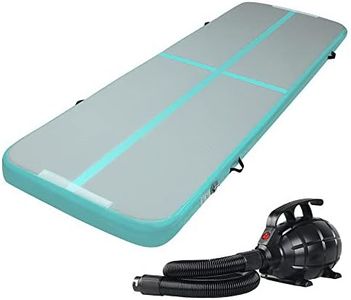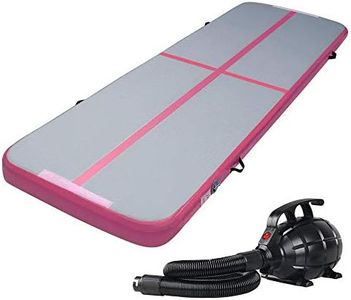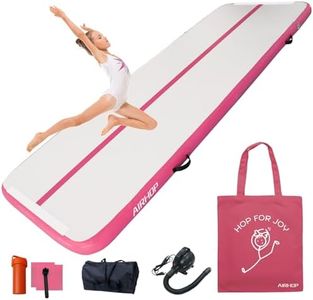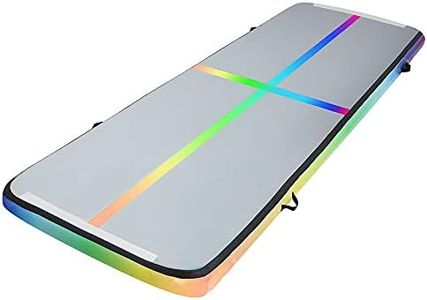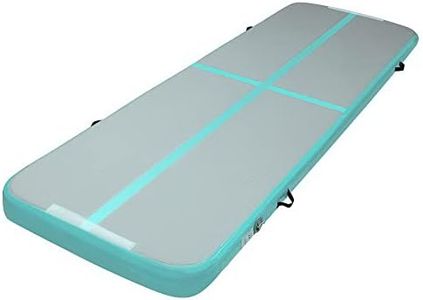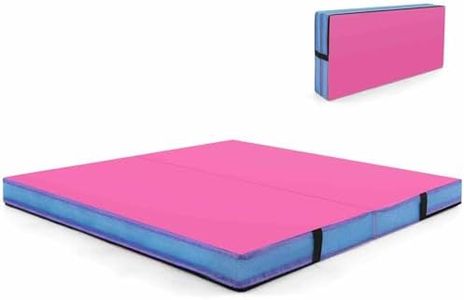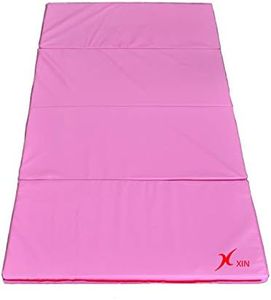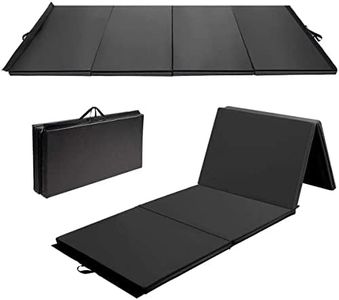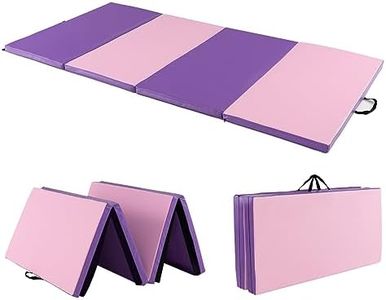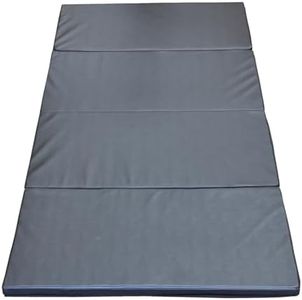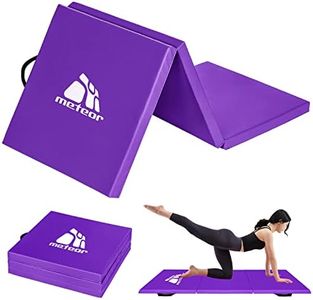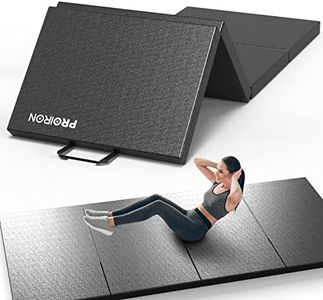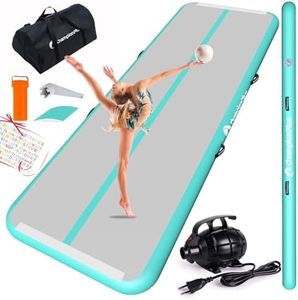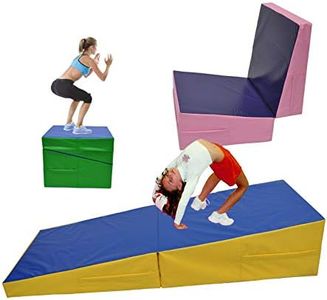We Use CookiesWe use cookies to enhance the security, performance,
functionality and for analytical and promotional activities. By continuing to browse this site you
are agreeing to our privacy policy
10 Best Gymnastic Mats
From leading brands and best sellers available on the web.Buying Guide for the Best Gymnastic Mats
Choosing the right gymnastic mat is important for safety, comfort, and performance during training or exercising. The right mat should provide enough cushioning to protect you from impacts, while also being stable and suitable for the types of activities you plan to do. Before buying, think about where you'll use the mat (indoor or outdoor), how much space you have, and how easy you want it to be to set up or store the mat. Knowing the main features of gymnastic mats will help you make a better decision for your needs.ThicknessThickness refers to how much padding the mat provides and is measured in inches or centimeters. This is important because thicker mats offer more cushioning, which can help reduce the impact on your joints and prevent injuries during landings or falls. The right thickness depends on what you'll use the mat for: thin mats (around 1-2 inches) are lighter and easier to move but offer less protection, suitable for gentle activities or basic stretching; medium-thickness mats (2-4 inches) offer a good balance for general gymnastics, tumbling, or martial arts; thicker mats (over 4 inches) are best for high-impact activities or for younger gymnasts who need extra protection. Consider what exercises or skills you’ll practice to decide which thickness fits your safety and comfort needs.
MaterialMaterial describes what the mat is made from, both on the inside (foam core) and outside (cover). The core is often made from polyethylene or polyurethane foam, affecting firmness and shock absorption. The cover is usually vinyl or another non-slip, easy-to-clean fabric, which protects the mat and provides a safe surface. Firmer mats offer more stability for balancing or standing, while softer mats are better for absorbing impact. Material choice also influences durability and ease of cleaning – for frequent or heavy use, a durable, wipe-clean cover is best. Think about your main activities: if you need a mat for high-impact landings, focus on dense and shock-absorbing foam; for balance work or stretching, a firmer, less cushioned mat may be ideal.
Size (Length and Width)Size refers to the length and width of the mat, which is important because it determines how much space you have to move and perform skills safely. Mats come in various sizes: smaller mats are more portable and suitable for limited spaces or simple drills, while larger mats give you freedom for running, tumbling, or group workouts. It's helpful to measure the area where you'll use the mat and choose a size that fits comfortably within that space, leaving room for movement. Always consider the types of exercises or routines you'll do – for floor routines or stretching, a larger mat is better; for single-skill drills, a smaller mat may be enough.
Portability and StoragePortability means how easy it is to move, fold, or store the mat when not in use. Some mats fold up into smaller sections or roll up and have handles for carrying, which is great if you need to store it away or take it to different places. Mats that don't fold are usually sturdier but can be challenging to store in smaller homes or apartments. If you’ll be moving the mat often, look for features like lightweight construction, handles, or folding panels. If you have a dedicated workout space, portability may not be as important.
Surface Grip and Non-slip BaseThis refers to how well the mat stays in place and how much grip its top surface offers during use. A good grip prevents slipping, which is crucial for safety when performing quick or dynamic movements. Mats with non-slip bases stay put on hard floors, helping to reduce the risk of accidents. If you practice fast-paced, energetic skills or use the mat on smooth flooring, a mat with a non-slip base and textured top is highly recommended. For gentle activities or carpeted surfaces, this may be less critical but still a useful feature.
